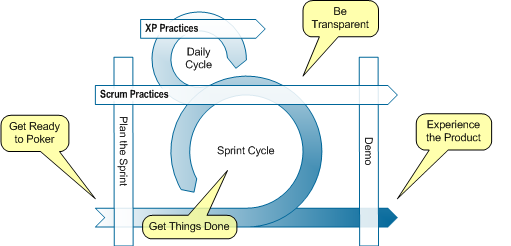The Soup Stone – 4: They seem curious…
While he is sitting there, from the corner of his eye he sees little children coming from the little townships and saunter onto the square. They come closer and closer very carefully. In their eyes he sees something he hasn't seen in the eyes of the grown-ups: they seem curious. Without saying a word the little children stop and sit down a few meters from where he is sitting. They don't speak to him and they surely don't speak to each other. There are children with green hair, green shoes and green clothes, children with red hair, red shoes and red clothes and children with orange hair, orange shoes and orange clothes.
After a while the soldier speaks to one of the children. It's a little boy with orange hair and matching shoes and clothes. He says: "I'm hungry, do you think your parents might have something to eat?" The little boy replies: "Well, we don't have much. We only eat carrots because they're ours and we are not allowed to give them to other people." Our soldier gets similar replies from the other children, one saying they only have leek, the other saying they only have tomatoes. Yet another child says they only eat onions because it is all they have. The soldier sees all of the children are looking hungry.
Now the soldier notices some grown-ups coming towards the children. It looks like they're coming to collect their children. But he sees a trace of curiosity in their eyes as well. They look at the soldier and the soldier looks at them, looks at himself and then he understands: he is wearing green trousers, but a red jacket, a white shawl and an orange hat. It seems like people are thinking: "How is this possible, all these different colors worn by one single person?"
Now the soldier notices some grown-ups coming towards the children. It looks like they're coming to collect their children. But he sees a trace of curiosity in their eyes as well. They look at the soldier and the soldier looks at them, looks at himself and then he understands: he is wearing green trousers, but a red jacket, a white shawl and an orange hat. It seems like people are thinking: "How is this possible, all these different colors worn by one single person?"
How to Iterate
In the previous posts we showed how Scrum and XP are used together to self-organize and maintain a stable product. This helps to deal with the complexity of IT-development and to easily respond to change. We argued that the best thing to do is to iterate, that is, have cycles of constant length and take time to look back on each cycle in order to improve the next.
Figure 29 shows the core Scrum process with its typical Sprint cycle and Daily cycles. Plotted within this process we show different goals of iterative IT-development that are only partly addressed by Scrum or XP. In this chapter we are going to show how each of these goals can be met using some practices common to Agile and practices from RUP.
In the post Be Transparent we revisit Scrum and add some comon Agile practices.
It is followed by post in 4 parts on how to iterate with RUP:
Part 1 Get Ready to Poker.
Part 2 Get Things Done.
Part 3 Experience the Product.
Part 4 Iterations in Time.
Other Relevant Posts:
Self-organize using Scrum
Maintain Stability using XP
 |
| Figure 29: Positioning Scrum and XP |
In the post Be Transparent we revisit Scrum and add some comon Agile practices.
It is followed by post in 4 parts on how to iterate with RUP:
Part 1 Get Ready to Poker.
Part 2 Get Things Done.
Part 3 Experience the Product.
Part 4 Iterations in Time.
Other Relevant Posts:
Self-organize using Scrum
Maintain Stability using XP

Your blog so inspiring
ReplyDeleteThese posts are great
baju batik
thanks loving the blog post.
ReplyDeleteHappy Independence Day Status
http://blog.chicagocharitablegames.com/2010/05/dont-tap-tank-poker-tips-and-strategy.html?showComment=1602112915643#c6199318866247051767
ReplyDeleteHey There. I found your blog using msn. This is a very well written article. I’ll be sure to bookmark it and come back to read more of your useful info. Thanks for the post. I’ll definitely return 먹튀검증사이트
ReplyDeleteThanks for this wonderful information. You posts are really nice and interesting. Writing style is also very amazing how to play pokemon games on iPhone
ReplyDelete